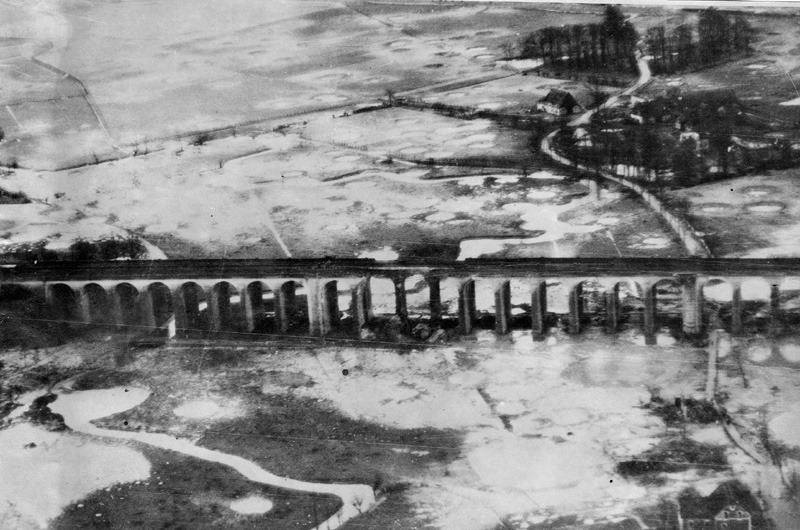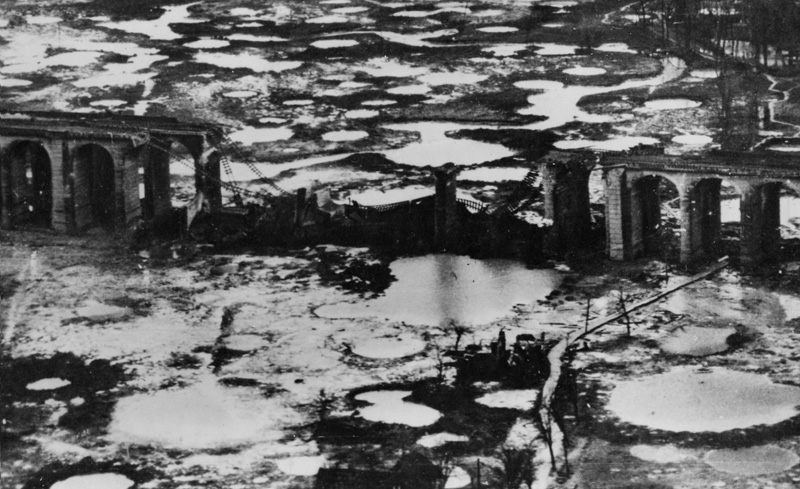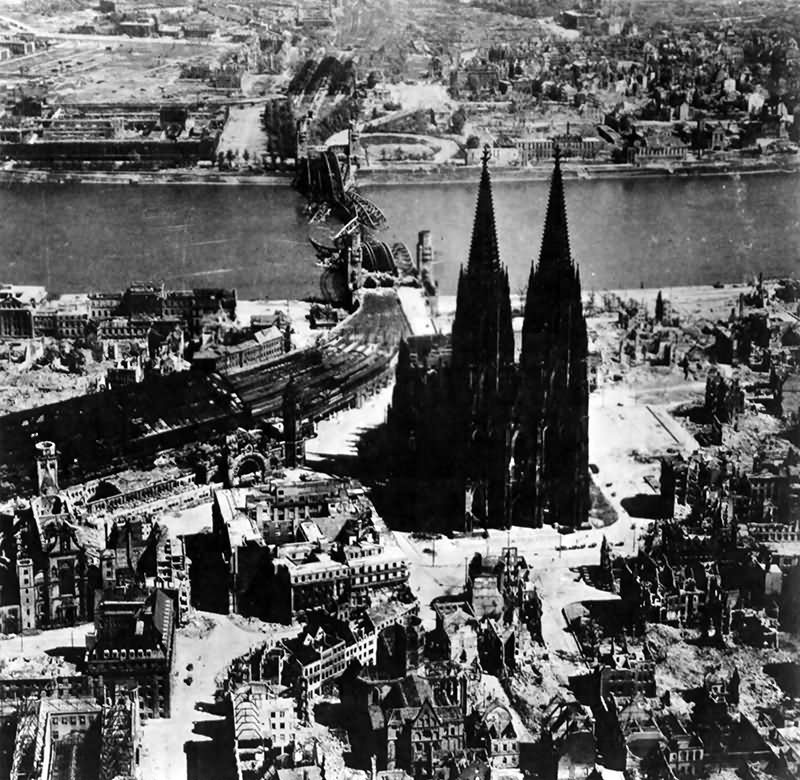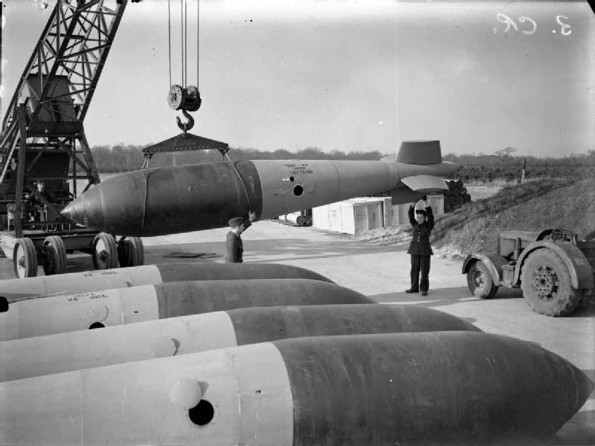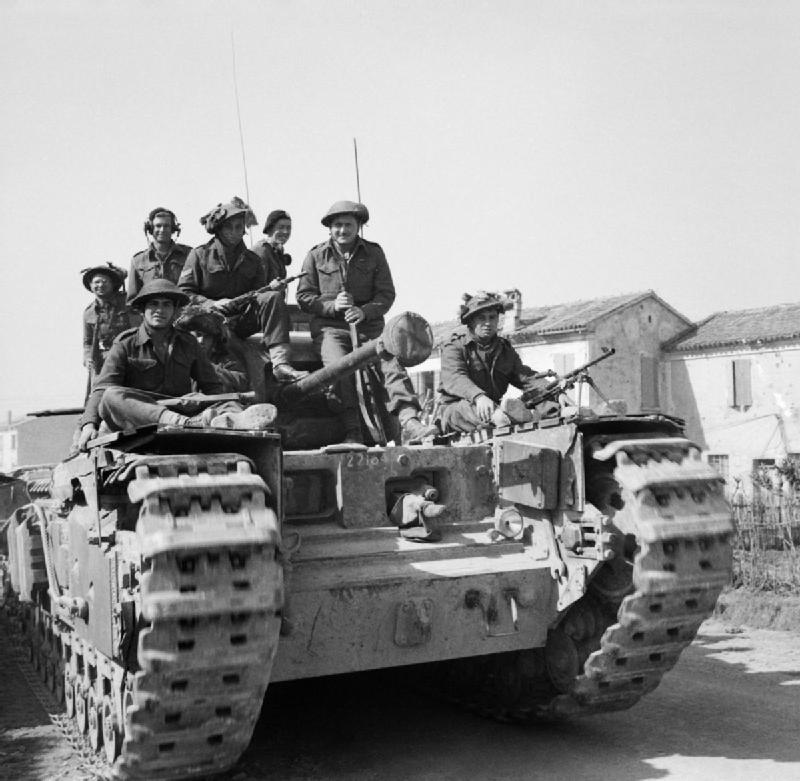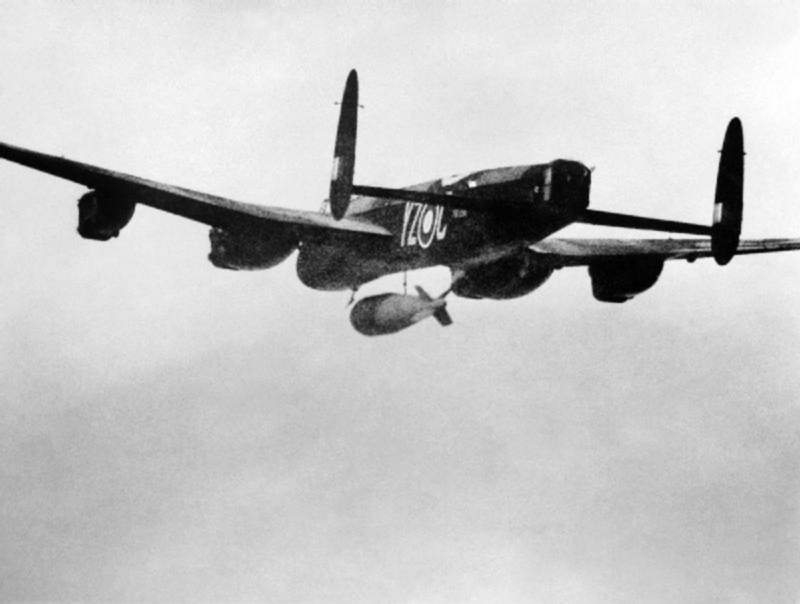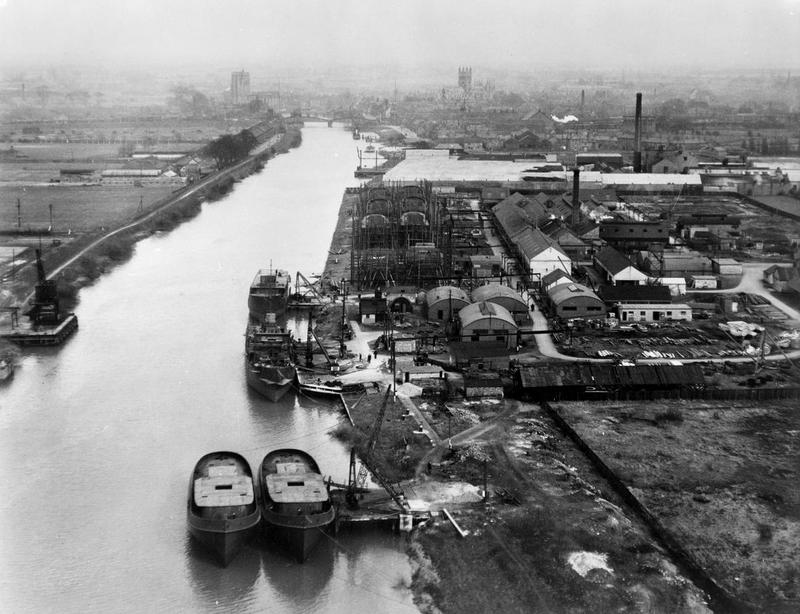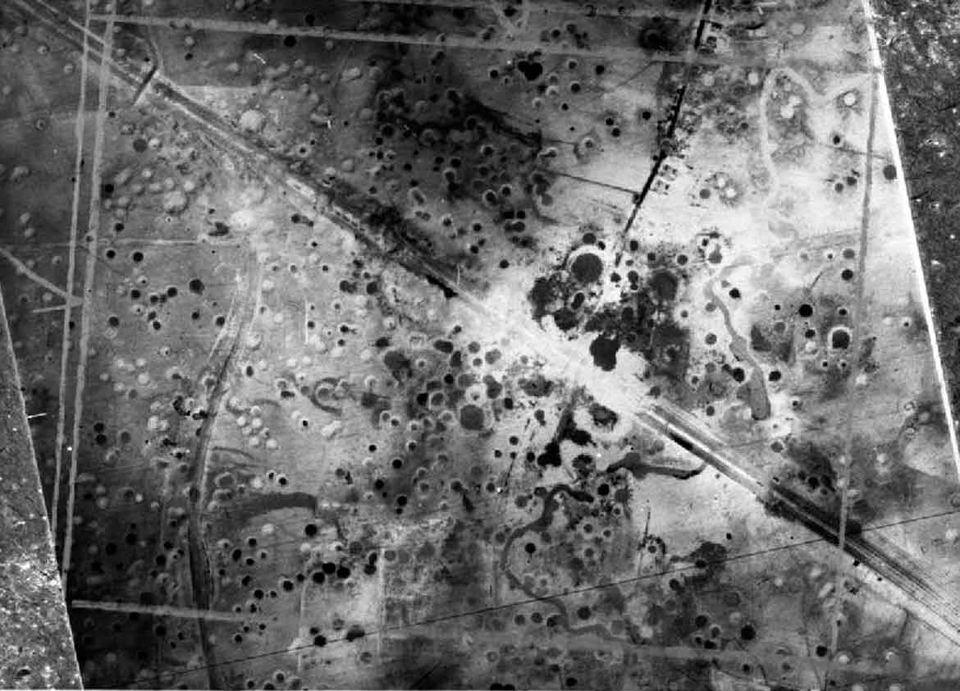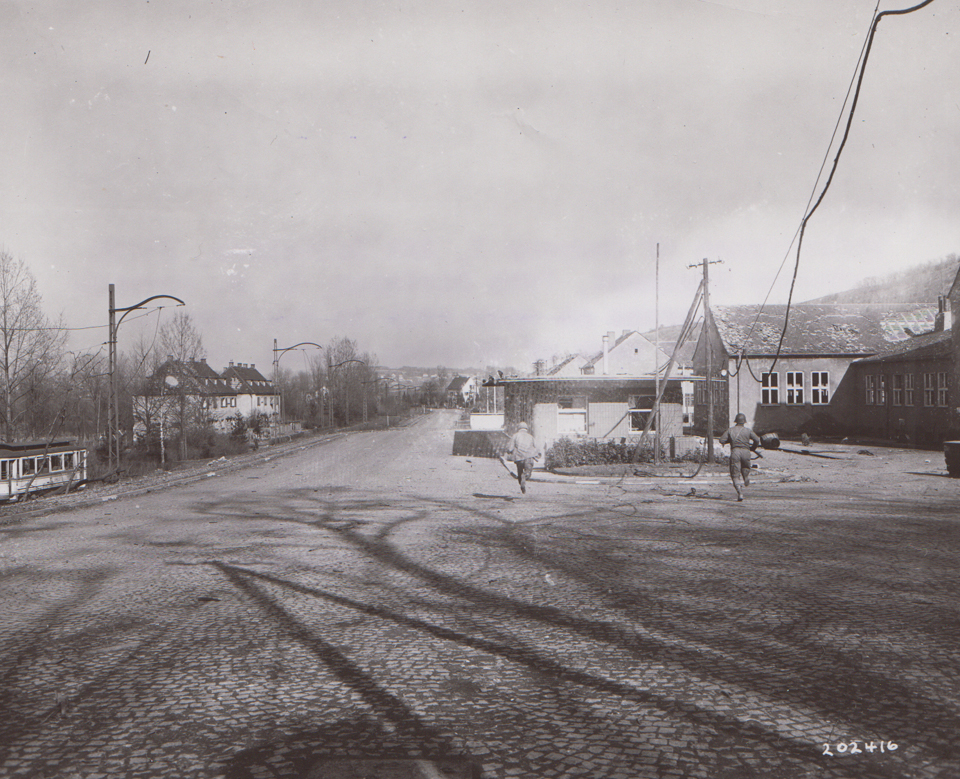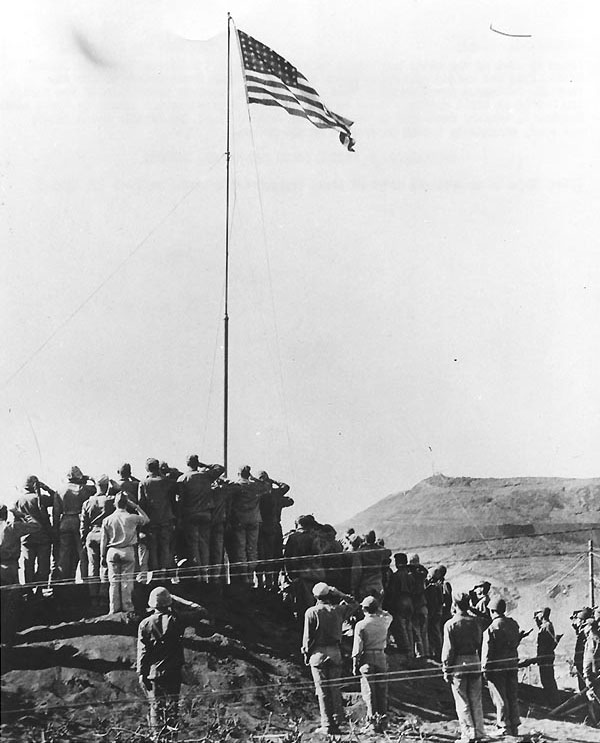Air Operations, CBI
BURMA- 11 10th Air Force B-25s attack troops and motor vehicles near Laihka.
- 3 B-25s attack a bridge at Laihka.
- 39 10th Air Force P-47s attack troops, motor vehicles, and supplies between Laihka and Namlan.
- 29 P-47s sweep roads behind the Japanese Army battle lines.
- 20 P-47s support Chinese Army ground forces around Mansam.
- 3 308th Heavy Bomb Group B-24s attack shipping in the South China Sea.
- 1 341st Medium Bomb Group B-25 and 4 14th Air Force fighter-bombers attack a rail line near Tungyangchen.
- 4 P-51s attack targets of opportunity near Chihsien.
- FEAF B-25s attack several coastal targets during an anti-shipping sweep.
- 19 51st Fighter Group P-51s and 449th Fighter Squadron P-38s attack a Japanese Army barracks at Vinh Yen.
Air Operations, Europe
RAF BOMBER COMMANDDaylight Ops:
- 169 Lancasters of No. 3 Group carry out G-H attacks through cloud on oil plants at Datteln and Hattingen (near Bochum). Both attacks appear to be accurate, but no results are seen.
- 1 Lancaster is lost on the Hattingen raid.
- 32 Lancasters and 1 Mosquito of No. 5 Group, with 4 Oboe Mosquitos of No. 8 Group, are sent to hit the Bielefeld and Arnsberg viaducts. 28 Lancasters drop Tallboy bombs and the No. 617 Squadron Lancaster of Squadron Leader C. C. Calder drops the first 22,000lb 'Grand Slam' bomb at Bielefeld. The Arnsberg viaduct, No. 9 Squadron's target, is later found to be undamaged, but more than 100 yards of the Bielefeld viaduct collapses through the 'earthquake effect' of the Grand Slam and 'Tallboys' of No. 617 Squadron. This damage will prevent movement from the Ruhr to Remagen.
- There are no losses.
- 244 Lancasters and 11 Mosquitos of No. 5 Group attack the Wintershall synthetic oil refinery at Lützkendorf. Photographic reconnaissance shows that 'moderate damage' is caused.
- 18 Lancasters are lost.
- 230 aircraft including 121 Lancasters, 98 Halifaxes and 11 Mosquitos of Nos. 6 and 8 Groups are sent to Zweibrücken. This attack is directed on to the town area to block the passage through it of German troops and stores to the nearby front line. The raid takes place in good visibility and is very effective. The local report shows that every public building and inn and 80 per cent of the houses in the town are destroyed or damaged. Most of the civilian population had been evacuated. Those remaining take shelter in 2 large caves in the north and south of the town or in the normal basement shelters of their houses.
- There are no losses.
- 161 aircraft including 127 Halifaxes, 23 Lancasters and 11 Mosquitos of Nos. 4 and 8 Groups, on the same task as the Zweibrücken raid, proceed to Homburg. No local report is available, but it is believed that this attack is equally successful.
- 2 Halifaxes are lost.
- 75 Mosquitos are sent to Berlin, and 6 each to Bremen and Brunswick, and there are 27 Mosquito patrols and 52 RCM sorties.
- No. 100 Group loses 2 Mosquitos and 1 Fortress.
- The last Stirling operation of Bomber Command is flown on this night when Stirling LJ516, from No. 199 Squadron at North Creake, flies a Mandrel screen operation. Squadron Leader J. J. M. Button, the Australian pilot, and his crew land safely.
- A total of 372 Luftwaffe planes attacked the Rhine River bridges during the past week. Allied antiaircraft shoot down 80.
GERMANY:
- 390 1st Air Division B-17s attack an industrial plant, two bridges, and a rail center.
- 267 2nd Air Division B-24s attack marshalling yards at three locations.
- 404 3rd Air Division B-17s attack a munitions factory, two oil refineries, two industrial plants, and a marshalling yard.
- 143 heavy bombers attack secondary targets and targets of opportunity.
- 3 b-17s and 1 of 605 VIII Fighter Command escorts are lost.
GERMANY:
- More than 350 9th Air Division bombers attack three airdromes, a rail junction, four rail bridges, five defended towns, and targets of opportunity.
- Among numerous 9th Air Force fighter missions, when 36th Fighter Group P-47 pilots locate more than 50 Luftwaffe bombers and escorts preparing to take off from Lippe Airdrome to attack the Remagen bridges, they destroy 23 Ju-87s and a Bf-109 during the course of on-the-deck bomb, rocket, and strafing attacks. Minutes later, 12 404th Fighter Group P-47s destroy 21 of the remaining Ju-87s and Bf-109s. 2 404th Fighter Group P-47s are lost following a midair collision. Thereafter, Luftwaffe attacks against the Ludendorff bridge and several new engineer bridges at Remagen (amounting to 372 sorties between March 7 and March 14) drop off precipitously.
- 8th and 9th Air Force fighter pilots down 26 Luftwaffe aircraft over Germany between 1330 and 1630 hours.
ITALY:
- 12th Air Force B-25s attack bridges at four locations.
- XXII TAC P-47s attack road and rail traffic and dumps.
- During the night, XXII TAC A-20s and A-26s attack fills and crossing in the Po River valley.
AUSTRIA:
- 15th Air Force heavy bombers attack marshalling yards at Graz, Knittelfeld, and Wiener-Neustadt.
- 15th Air Force heavy bombers attack a marshalling yard.
- 15th Air Force heavy bombers attack oil refineries at two locations and a marshalling yard.
- 325th Fighter Group P-51 pilots down 20 FW-190s in a running fight near Lake Balaton between 1315 and 1410 hours.
- 15th Air Force heavy bombers attack a marshalling yard at Zagreb.
Air Operations, Formosa
V Bomber Command B-24s and 38th Medium Bomb Group B-25s attack the naval base and fuel stores at Mako in the Pescadore Islands.
[Air Operations, Pacific
US bombers raid Osaka, inflicting 13,000 casualties.
[Air Operations, Philippines
- FEAF B-24s attack the Konel area.
- 23 494th Heavy Bomb Group B-24s attack supply installations at Sarangani Bay.
- B-24s and B-25s attack port facilities at Isabella and anti-aircraft batteries and occupied villages in the Zamboanga area.
- V Bomber Command A-20s and V Fighter Command fighter-bombers attack numerous targets on Luzon.
- A-20s attack Pandanan Island in the Panay area.
Air Operations, Volcano Islands
VII Fighter Command P-51s undertake a ground-support mission—the last of the Iwo Jima campaign—in behalf of V Marine Amphibious Corps troops. 7th Air Force B-24s and VII Fighter Command P-51s and P-61s will continue to attack targets in the bypassed Bonin Islands.
[Battle of the Atlantic
On March 10 U-714 sunk the Norwegian freighter Nordhav II (425t) in Convoy FS-56. The newly-commissioned South African frigate Natal is ordered to carry out a search. She acquires asdic contact which classifies as 'submarine'. A Squid attack is made after which a large amount of oil is seen on the surface. A second attack, more oil, but contact is loss. Ships of Escort Group 17 locate the U-boat on the bottom and depth-charge her to destruction.
| Class | Type VIIC |
| CO | Kapitänleutnant Hans-Joachim Schwebke |
| Location | North Sea, off W coast of Scotland |
| Cause | Depth charge |
| Casualties | 50 |
| Survivors | None |
Burma
The 19th Indian Div, British XXXIII Corps, takes most of the city of Mandalay, apart from a few enemy strongholds including Fort Dufferin, which is heavily bombarded by Allied artillery and aircraft. Maymo, to the east of Mandalay, falls to the 20th Indian Div.
[Eastern Front
The Soviets capture Zvolen in western Czechoslovakia.
HUNGARYThe 6th SS Panzer Army renews its offensive against the Soviet 27th Army but makes no headway.
CENTRAL SECTORHeavy fighting rages at Kolberg. The Poles demand the surrender of the town but the garrison comander, Gen Fullreide, refuses. He is aided in his defense by 2 naval destroyers lying offshore.
Fighting at Atldamm intensifies as the 47th Army renews its attacks. The 3rd Panzer Army has steadily strengthened its positions over the previous few days and withholds the Soviet attack.
SOUTHERN SECTORThe 6th SS Panzer Army launches a last ditch effort to break through the positions of the 27th Army. 200 panzers, with arty and infantry support, surge forward but become embroiled in bitter fighting. To the north the 2nd Ukrainian Front captures Zvolen.
[Germany, Home Front
Adolf Eichmann declares he could go to his grave happy knowing he had helped kill six million Jews.
[Iwo Jima
At 9:30 the Americans consider that the capture of the island is complete, and hoist their flag. But in the north a number of pockets of resistance have still to be eliminated.
[Pacific
- The US submarine Bream (SS-243) sinks the Japanese auxiliary submarien chaser Keihin Maru (76t) in the Java Sea.
- The US submarine Trepang (SS-412) sinks the Japanese guardboat Kaiko Maru off Inubosaki.
- The British submarine Spirit sinks the Japanese auxiliary sailing vessel Ryuho Maru off Massalambo Island.
The US destroyers Cotten (DD-669) and Dortch (DD-670) sink the Japanese guardboats Futa Maru and No.17 Kaiko Maru off the Bonins.
Philippines
On Luzon the biggest engagements take place north of Antipolo, east of Manila, where the Americans advancing against the Shimbu line find themselves facing a series of strong Japanese defensive positions. Maj-Gen Edwin D. Patrick, commander of the 6th Infantry Division, is mortally wounded on the front lines along with one of his regimental commanders. The Shimbu defenses are shattered after attack by the 43rd and 6th Infantry Divisions. Japanese casualties in this month-long battle are estimated at over 3,300. US losses are over 1,300 killed and wounded.
The XI Corps takes over the mission to capture the dams and destroy the Shimbu Group.
The Americans attack Japanese positions on Mount Capisan, on Mindanao, while fighting continues southeast of San Roque.
[Western Front
While the Germans continue their air attacks aimed at destroying the Remagen bridge and the pontoon bridges erected by the American sappers in this sector held by units of the III Corps, US 1st Army, the VII Corps reorganizes its formations in readiness for the attack east of the Rhine. On the northern flank of the Remagen bridgehead, the 78th Div, III Corps, reaches its objectives near Ägidienberg, Rottibz and Kalenborn.
In the US 3rd Army sector, the 87th Div, VIII Corps, is moved into the Koblenz-Lehmen sector. Meanwhile, in the early hours of the morning, the XII Corps begins to advance from the Moselle to the Rhine, and on the southern flank of the army units of the XX Corps take Heddert, the 94th Div, Weiskirchen, the 80th Div, Nieder Felle and Fell, the 65th Div.
The American 7th Army completes its preparations for the offensive against the Siegfried Line; in the XXI Corps sector, the 101st Cavalry Group and 70th Div penetrate into Germany and patrol the south bank of the Saar River.
[Images from March 14, 1945
|
|
|
|
|
|
|
|
|
|
